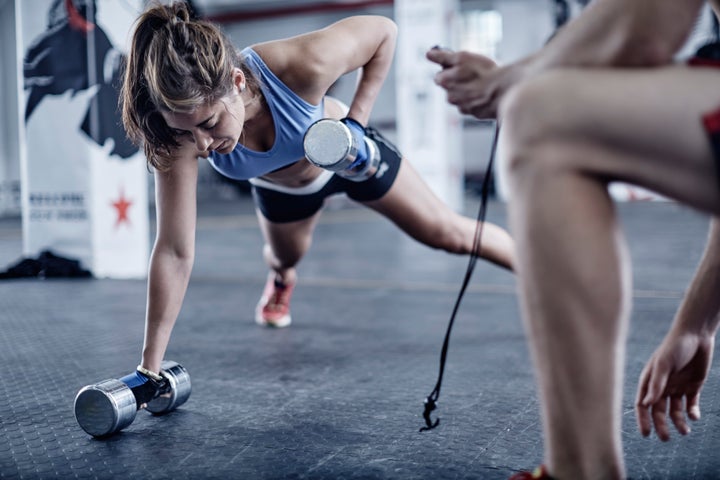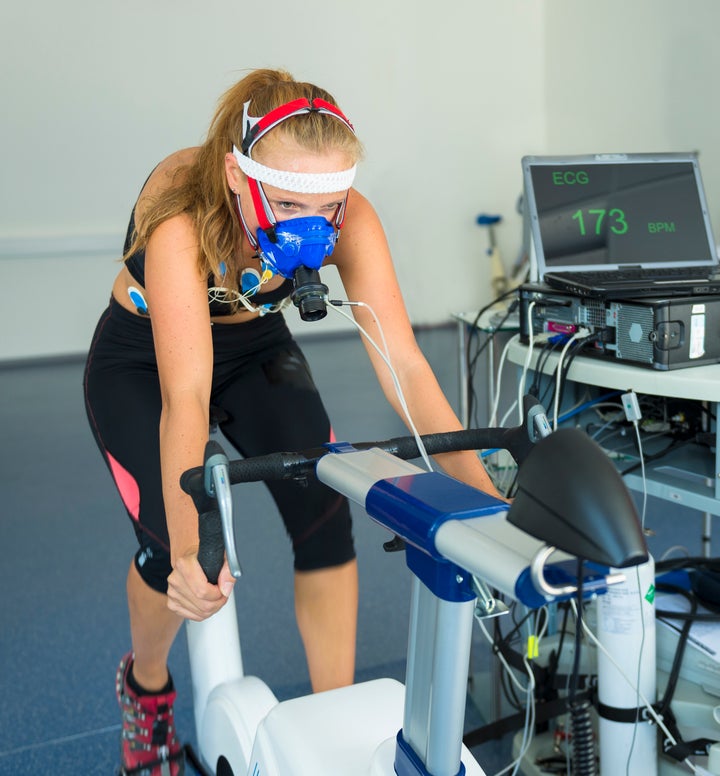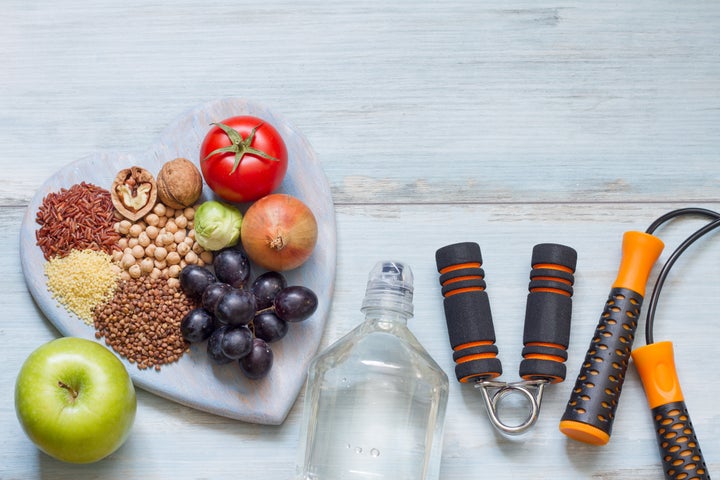Fitness used to be a guessing game of sorts. We tried a workout, enjoyed it or swore we’d never go back, and based on how our bodies felt/and/or looked afterwards (was there some Olympic swimmer-esque muscle tone emerging in our arms or was that just a trick of the light?), we’d either turn ourselves into runners, or cyclists, or Pilates buffs. Or never bother with that exercise again and move onto something different.
But things have changed: science is playing an ever-increasing role in the lives of athletes. Even those of us nowhere near Olympic levels. Yet.
Turns out you can use the scientific tools at your disposal to improve your gains - without exerting any extra effort. Here are the things you need to know about what’s happening in sports science and how it can help you see results.

Embrace wearable tech
Fitbits, Apple Watches and the like aren’t just the latest statement accessory to wear in the hopes of looking like you’re a fitness buff. They’re an easy, inexpensive way for mere mortals to get a better knowledge of how their bodies are working - and working out.
“Having something telling you how much power you’ve produced and how you’re improving, repetition on repetition, gives you an individual opportunity to assess or compete with yourself session by session,” says Alex Wolf, head of strength and conditioning at the English Institute of Sport, the UK’s largest provider of sport science and medicine to elite sport.
While wearable heart-rate monitors are useful for all endurance-based training, those looking to be a bit more serious with their workouts can invest in PUSH Bands or Form Lifting Collars, which you can attach to equipment (or yourself), to give you an instant internal competitor that allows you to longitudinally track your performance (without doing too much extra work).

HIIT workouts are the way forward
Good news: your days of slaving away in the gym for hours are officially over. Huge amounts of scientific evidence are suggesting that higher-intensity based training is as effective, if not more effective, at changing aerobic capability.
HIIT - which involves alternating bursts of intense activity with recovery sessions - has also been shown to increase fat loss and muscle mass.
“The shift away from long, steady-state exercise to high-intensity, interval-based work is a shift away from having to spend an hour-and-a-half in the weight room,” says Wolf.
In fact, one recent Canadian study found that a minute of super-intense exercise produces similar benefits to longer, traditional endurance training for 45 minutes.
So no, you can’t use that old “there just isn’t enough time in the day” excuse anymore while you go off and scoff a packet of crisps.
One thing to note? HIIT isn’t for everyone, and isn’t suitable for those with preexisting heart conditions.
Chris Howe, senior technician and PhD researcher at Kingston University, advises mixing HIIT training with other types of workouts.
“High intensity interval training (HIIT) has become very popular in recent years, due to the observed benefit of similar metabolic gains to longer endurance training sessions (long runs, etc.).
“However, it is important to note that you should not rely on HIIT training alone, as variation is important for targeting all aspects of fitness and performance,” he says.

Soak it up
We all know the importance of staying hydrated before, during and after a workout, but that’s not the only kind of benefit water can give us.
“A recent study from Bangor University (Zurawlew et al, 2016), suggests that you can maximise your endurance performance in the heat by simply having a hot bath straight after - they observed a 4.9% increase in a 5KM running time trail after just six days of hot water immersion post-session,” says Howe.

Get your stats
“You often hear people talking about how high-protein diets aren’t good for your kidneys, or how drinking alcohol decreases your testosterone levels or drinking from plastic bottles increases your oestrogen levels. At the end of the day, if you are not testing, you’re just guessing,” explains Andy Vincent, an elite master trainer at Third Space in London.
As part of Third Space’s OUT/SET premium package, members can have an in-depth in-body and mobility assessment, which includes a movement screening prior to training - “the best way to find out how your body moves, which then determines what exercises you choose, what mobility, soft tissue work and activation exercises you require,” explains Vincent.
This way, your programme is tailored to suit your needs and body’s abilities. As part of the assessment, members have their blood work done.
“Getting annual blood work (or more regularly) is a great way to see how exercise is affecting your body, such as cholesterol, inflammation, androgens (sex hormones), thyroid, etc. Blood chemistry can be a valuable way to make sure your training is having a positive effect on your body,” says Vincent.
Part of Chris Howe’s job as an exercise physiologist at Kingston University London is to test people’s fitness levels and the impact of any nutritional strategies, new equipment or diverse types of training.
His top tip? Find out what your VO2 max measurement is - the measurement that tells you the maximum rate at which you can take oxygen from the air and deliver it through the lungs into the bloodstream for use by your working muscles.
“By knowing information such as your VO2 max, threshold level and heart rate training zones, it enables anyone to really maximise their training on a personalised individual level,” Howe explains.

Look to your diet
You can work out as much as you want to, but if you’re eating poorly, we all know you won’t be getting any closer to attaining those washboard abs.
But eating healthfully isn’t the only way to maxmise your workouts. Science is taking things one step further, with current research exploring the benefits of periodised nutrition - aka fasted endurance sessions - to maximise the effects of training, according to Howe.
“This can maximise the benefits of the session to increase overall performance, by reducing the body’s reliance on carbohydrates and increase the body’s ability to use fat as a fuel source,” he explains.
“However, it is important to also refuel after the session to maximise the benefits. With more gym-based resistance training it is important to make sure you are starting this session in an energy-rich state of high-protein availability to make the most of the anabolic effects of the session.”